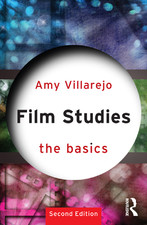Chicago Film Festival: Control
 The first half-hour of Anton Corbijn's Control parades so many smart, savvy strategies for avoiding the typical music-bio pablum that it's particularly dispiriting when the middle and end of the film so dully and incorrigibly embrace those very clichés. So, let's emphasize the beginning, since the filmmakers conjure so much good will in those early sections that even the increasingly arbitrary sound-image matches, the literalized use of songs to embody narrative action, and the late-breaking bouts of prosaic and redundant narration can't entirely snuff the film's appeal. Control at least admits from the outset, by filling the screen with closed doors and massive, unforgiving edifices, that visual and psychological penetration will always run into impassable barriers. I think that's why the sketchbook quality of the screenplay and the scrappy but eloquent black-and-white photography work so well; like Christopher Munch's The Hours and Times, though with more expansive narrative parameters, Control riffs on and hints at the lived experience of Ian Curtis, the lead singer of the British-invasion band Joy Division, instead of reaching for an exhaustive Seven Ages of Man biography.
The first half-hour of Anton Corbijn's Control parades so many smart, savvy strategies for avoiding the typical music-bio pablum that it's particularly dispiriting when the middle and end of the film so dully and incorrigibly embrace those very clichés. So, let's emphasize the beginning, since the filmmakers conjure so much good will in those early sections that even the increasingly arbitrary sound-image matches, the literalized use of songs to embody narrative action, and the late-breaking bouts of prosaic and redundant narration can't entirely snuff the film's appeal. Control at least admits from the outset, by filling the screen with closed doors and massive, unforgiving edifices, that visual and psychological penetration will always run into impassable barriers. I think that's why the sketchbook quality of the screenplay and the scrappy but eloquent black-and-white photography work so well; like Christopher Munch's The Hours and Times, though with more expansive narrative parameters, Control riffs on and hints at the lived experience of Ian Curtis, the lead singer of the British-invasion band Joy Division, instead of reaching for an exhaustive Seven Ages of Man biography.Retreating into silence before blasting back to life with a Sex Pistols concert, a deliciously foul-mouthed improv poet, or a line from a favorite album sung at top volume into a mirror, the sound design of Control's first act doesn't just walk us through a portmanteau of fantastic songs but actually reacquaints us with the forceful, sensual, dare one say "primal" appeals of sound itself—even as writer-director Corbijn, a personal acquaintance of his subject, evokes Curtis in a charming, unhistrionic way as a Portrait of the Punk Rocker as a Young Low-Level Bureaucrat. Despite the prevailing ethos of punk, Curtis isn't fulminating against the System, and the film avoids pitting him falsely against some staid status quo. With his jerky, aw-shucks gestures in concert, Ian Curtis could be playing Curly in a community-theater Oklahoma!, but then he goes ramrod straight to wail out lyrics like "dance to the radio" as though the fate of the world (or of his, at least) depended on it, Ian constitutes his own graph of contradictions and mysterious affinities, and the film prefers to spark our own guesswork than to flip straight to any specious answer keys. Did Ian "get" that he was punk? When and how, and why, did he learn to sing like this? What did his band members think of his style, his lyrics, his dalliances? Entire sequences depend, and thrive, on the thrills of deferred and enigmatic revelation, as when Ian strides down his monochrome street beneath a potent Joy Division score (a sufficient shot in itself), turning to reveal that the word "HATE" has been graffiti'd on the back of his black leather jacket, and arriving at the front door not of a club or a rehearsal space but the Employment Exchange—where, unlike any rock star in any biopic in history, he handles his paper-pushing job rather well, and with seeming equanimity. Control doesn't need Ian to emit any rebel yells or to posit him at the center of any nostalgic iconography. The characterization, like the bulk of the songs, is scrupulously trimmed to an evocative hint, instead of a full-blown effigy.
But then, "effigy" and also "blow" pretty well describe the second half of the film, where Curtis' artistic and psychological legacy is reduced to one of inconsolable self-stranding between the claims of a wife (Samantha Morton, charismatic but under-challenged) and the arms of a mistress (Downfall's Alexandra Maria Lara, a frustrating blank of Paris Hilton proportions). Plus, Ian's medications threaten him as much as the maladies for which he takes them. And he sings "Isolation" in the plexiglas isolation of a recording booth, and "Love Will Tear Us Apart" plays while love, or something like it, sort of tears Curtis' marriage apart without, somehow, sparing us any of the customary sequences of matrimonial suspicion, confrontation, and tentative reunion. Resorting to ever more desperate strategies for getting inside Ian Curtis' head—a hypnotherapy session, a banal letter recited at length, visual and sonic reprises of earlier shots and snippets—Control becomes the very film that an ill-informed, speculating outsider would have made about Curtis after watching lots of Rays and Walk the Lines, and hardly the work of a promising stylist or a genuine technician, much less an actual confidante. Even the most abstract images, as of rope spinning through a pulley, assume strict, thudding roles within the overt logic of the narrative, and after several connotative deaths and a thousand spotlighted shots of Ian's flouted wedding band, the gig finally winds itself up. B–
Photo © 2007 Becker Films/The Weinstein Company
Labels: CIFF07, Festivals, Movies 2007, Music

















0 Comments:
Post a Comment
<< Home